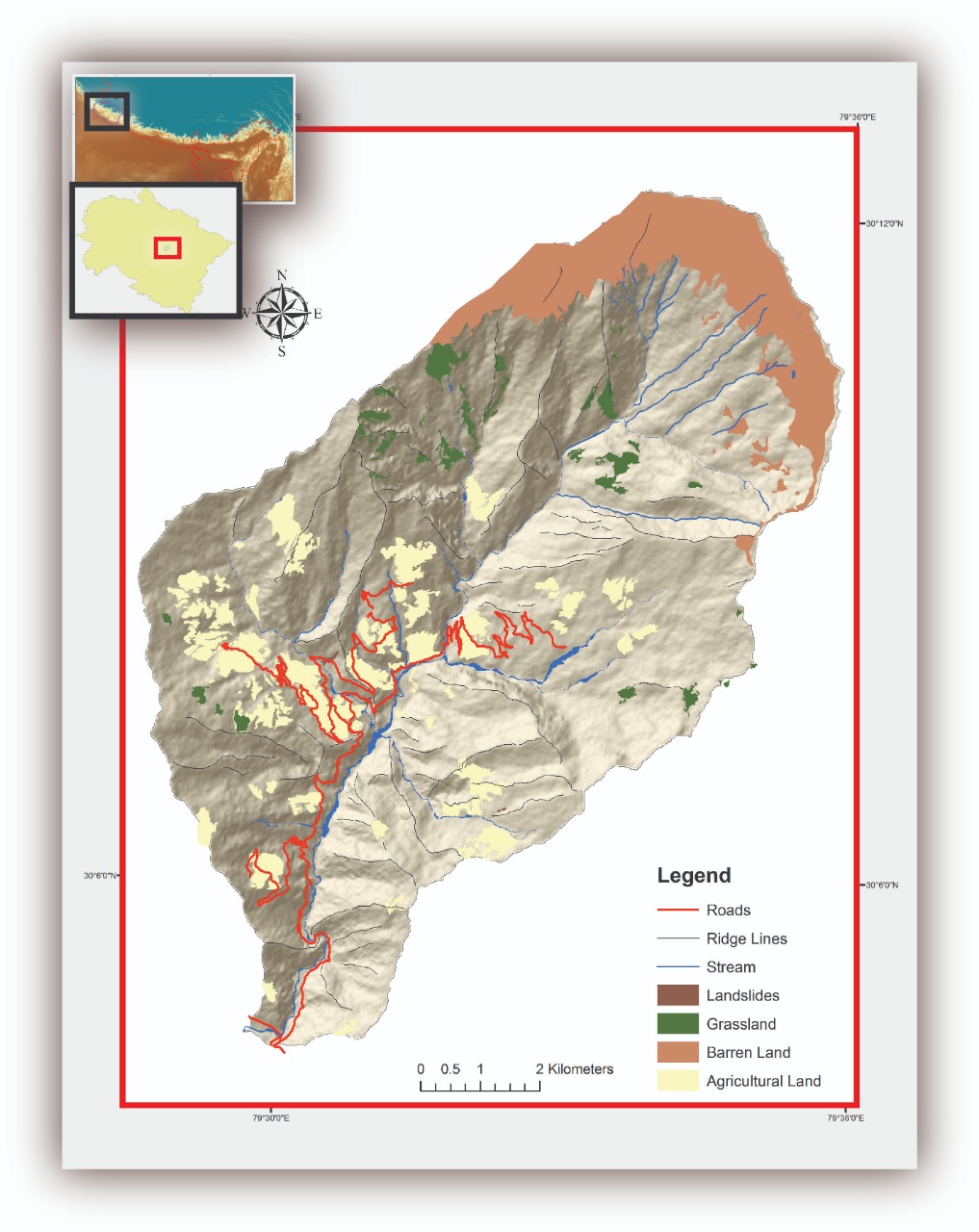
The Himalayas are a result of tectonic collision between Indian and Eurasian plates, hosting active tectonic processes of faulting, folding and upliftment coupled with climatic controls of monsoons.
It sets the stage for a natural laboratory to study landscape evolution and its impact on indigenous ecosystems. The monsoon forces are strengthened by the high altitude ranges which reciprocate by enhancing the erosion processes.
External parameters of population explosion and an exponential growth of migration and tourism industry in Himalaya is yet another determining factor to investigate the critical zone processes in the Himalaya.
Pranmati basin, a sub-catchment of the Ganga catchment in Lesser Himalayan regime is selected as an excerpt to study hillslope creep variability with regolith development, weathering kinematics, soil production, hydrological pathways and nutrient cycling in soil.
Augmenting these results with floral, faunal, microbial biodiversity and anthropogenic influence on their linkages will provide a holistic understanding of the functioning of the watershed.
This can be further escalated to broader domains in Himalayas and elsewhere.